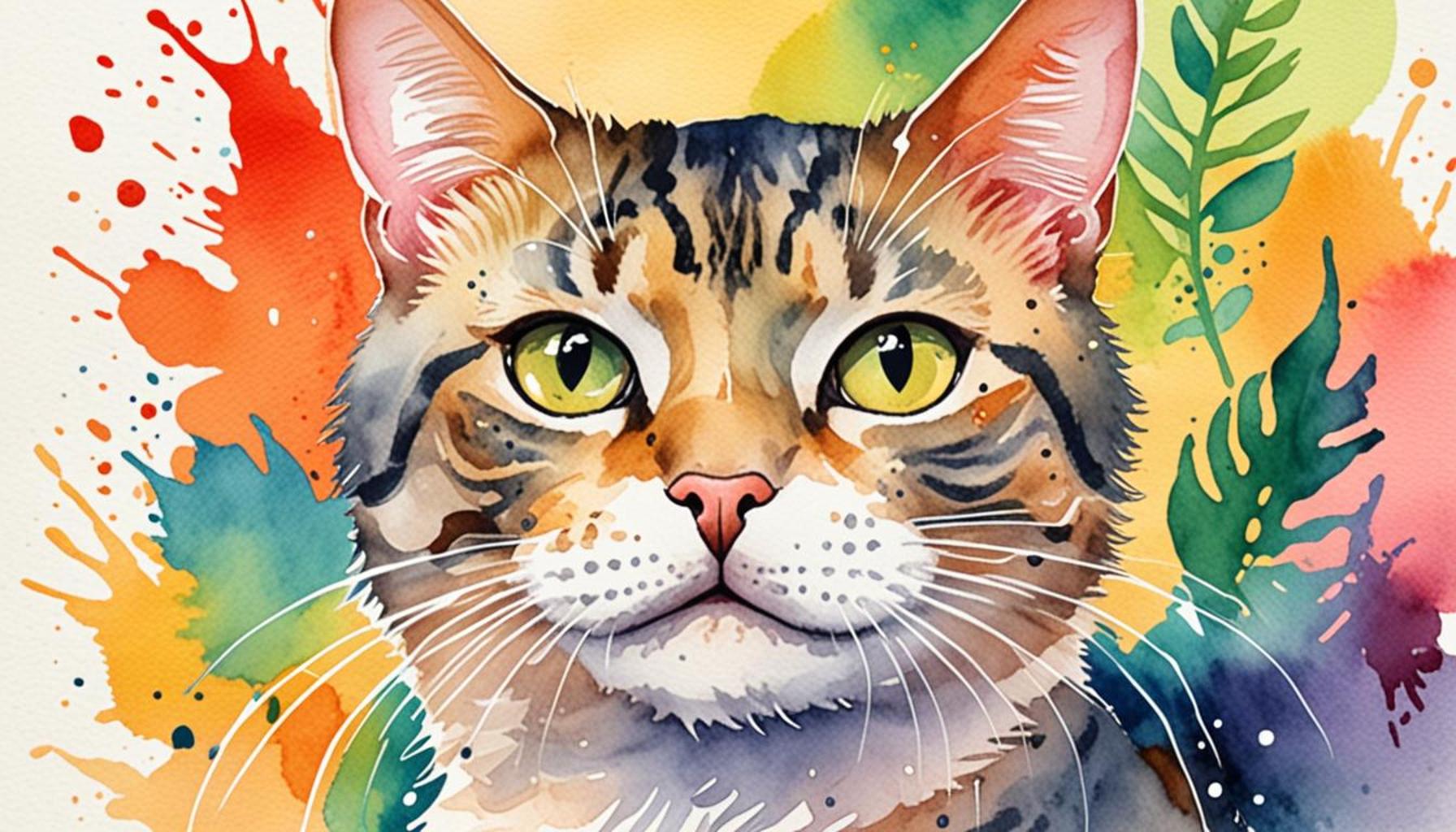Feline Behavior: How the Environment Affects Cat Personality

Understanding Feline Behavior
Have you ever wondered why your cat behaves the way it does? The connection between environment and cat personality is a fascinating topic that continues to intrigue animal experts and pet owners alike. Various factors can contribute to the unique behavior of felines, shaping their personalities in unexpected ways.
Key Environmental Factors Influencing Behavior
Several aspects of a cat’s environment can dramatically impact its temperament. Understanding these factors is crucial for cat owners who want to foster a positive feline behavior in their pets. Here are some key elements to consider:
- Space: Cats thrive in environments where they feel safe and have room to roam. A small, cramped space can lead to a stressed and anxious feline, often resulting in undesirable behaviors such as aggression or litter box issues. In contrast, a large home with various areas for exploration can encourage curiosity and active playfulness. For instance, a cat with access to expansive windows will enjoy observing the outdoors, stimulating its natural hunting instincts.
- Stimulation: Access to toys, climbing structures, and interacting with humans can significantly enhance a cat’s mental health. Engaging toys that mimic prey, such as feather wands, can stimulate a cat’s hunting instincts, while cat trees and shelves offer vertical space for climbing and surveying their territory. Providing different types of stimulation not only keeps your feline entertained but also fosters a healthier and more balanced lifestyle. For example, interactive play sessions can reduce anxiety and aggressive tendencies in cats who may otherwise feel bored or repressed.
- Socialization: Exposure to people and other pets can either soothe or stress a cat’s personality. Cats that encounter various social situations from a young age, like being around children or other animals, are typically more adaptable and sociable. Conversely, a cat secluded from human interaction may develop a timid disposition. Owners should gradually expose their pets to new experiences to ease the adjustment process, ensuring that social introductions are positive to prevent fear-based behaviors.
For example, a cat raised in a busy household with children might become more sociable and playful, learning to navigate around the hustle and bustle of family life. In contrast, a feline living in a quieter, understated environment may exhibit shyness and a preference for solitude. By examining and adjusting their surroundings, owners can help shape a feline’s disposition in meaningful ways.
Discovering More About Your Cat
As you delve further into understanding feline behavior, you’ll discover how nurturing a supportive environment can maximize your cat’s potential for happiness and well-being. It creates a balanced temperament that reflects both the cat’s innate personality and its environmental influences. Consider how different factors in your home may affect your cat’s behavior, and don’t hesitate to make changes for the better.
Are you ready to unlock the secrets behind your cat’s unique personality? Through careful observation and adjustment of their environment, you can help your feline thrive in ways you never imagined. Exploring the intricate dynamics of feline behavior not only deepens your bond with your pet but also enhances the overall quality of life for both of you.
DISCOVER MORE: Click here to learn about the benefits of socialization for your pet’s emotional well-being
How Space Shapes Feline Behavior
When considering the link between environment and cat personality, one of the most critical aspects is the space in which a cat resides. The layout and size of a living area can significantly influence a cat’s behavioral patterns. For instance, a shy or anxious cat may feel overwhelmed in a cluttered, busy environment. In such cases, providing a serene, designated area where the feline can retreat can help them feel secure. On the other hand, felines that thrive in spacious homes with opportunities for exploration often develop a more adventurous and engaged personality.
Creating Safe Zones
Enhancing your cat’s space goes beyond mere square footage; it’s about creating safe zones that cater to their specific needs. Cats are territorial animals and will appreciate the availability of various spots where they can observe their surroundings without feeling threatened. This could include:
- High Perches: Installing shelves or a cat tree can enable your feline to survey their territory from above, promoting a sense of safety and confidence.
- Quiet Hideaways: Providing covered spaces—such as small boxes, cat caves, or tents—allows cats to retreat and relax, reducing stress and giving them control over their environment.
- Window Access: Creating window perches or ensuring access to a sunny spot can stimulate a cat’s senses. Watching birds or squirrels outside can quench their natural curiosity, contributing to a positive mood and reducing feelings of boredom.
For example, a cat living with a family in a two-story house may climb and wander throughout the upper levels, engaging in playful behaviors as they explore. However, a cat confined to a small apartment may display signs of frustration, such as excessive vocalization or destructive behaviors. By strategically utilizing space, cat owners can create a nurturing environment that allows their pets to express themselves freely.
The Role of Environmental Enrichment
Another key component of a cat’s environment that influences behavior is environmental enrichment. This concept refers to engaging a cat’s mind through various activities and stimuli, helping to prevent boredom and the onset of behavioral issues. Providing a diverse range of enriching experiences can make a significant difference in a cat’s personality. Consider the following enrichment strategies:
- Interactive Play: Regular playtime with interactive toys can simulate the hunting experience, allowing cats to channel their instincts in a positive manner.
- Scent Exploration: Cats utilize their sense of smell in profound ways, so introducing new scents—such as catnip or toys infused with pheromones—can arouse curiosity and encourage exploration.
- Agility Courses: Setting up obstacle courses using tunnels and ramps can promote physical activity and mental stimulation while enhancing their confidence.
By prioritizing environmental enrichment, cat owners can foster well-adjusted, sociable felines, less inclined to display negative behaviors. Understanding how space and enrichment shape a cat’s behavior can profoundly affect their happiness and overall behavior, reinforcing the bond between pet and owner.
| Category | Advantages |
|---|---|
| Socialization | Interaction with people and other pets can enhance a cat’s confidence and reduce anxiety. |
| Environmental Enrichment | Providing toys, climbing spaces, and engaging activities promotes mental stimulation, encouraging adaptive behaviors. |
As we delve deeper into the relationship between feline behavior and environment, it becomes clear that the surroundings cats inhabit play a critical role in shaping their personalities. The level of socialization a cat experiences during its formative years significantly influences its temperament in adulthood. Cats raised in stimulating environments with ample human and feline interaction tend to exhibit greater confidence and friendliness, while those in isolation may develop fear or aggression.Further, an environment rich in enrichment opportunities can have profound effects on a cat’s behavior. Techniques such as introducing interactive toys, diverse climbing structures, and safe spaces for hiding can lead to enhanced cognitive functionality. This mental stimulation is crucial for preventing behavioral issues commonly seen in indoor cats, such as lethargy, excessive grooming, and other stress-related conditions. Understanding these aspects not only fosters better feline companions but also enhances the well-being of our beloved pets.
DIVE DEEPER: Click here to learn how diet shapes pet behavior</
The Influence of Social Interactions
Alongside spatial considerations and environmental enrichment, one must also examine how social interactions shape a cat’s personality. The degree and quality of socialization a cat experiences early in life can largely dictate how they will relate to humans and other pets as they grow. Kittens are particularly malleable during their formative months; exposure to varied experiences can cultivate a well-adjusted adult cat. Conversely, limited social exposure can lead to a fearful or aggressive demeanor.
Early Socialization
During the first few weeks of life, kittens are particularly receptive to new experiences. Pet owners can play a pivotal role in this process. Engaging in gentle handling and introducing kittens to different people, animals, and environments can significantly influence their adaptation skills. For instance, a kitten raised around children and dogs in a bustling household may grow into an outgoing, playful cat. In contrast, a kitten isolated in a quiet space may develop shyness and avoidance behaviors later in life.
Interaction with Humans
The way in which a cat interacts with its human companions can also affect its personality. Cats that experience positive interactions—such as being petted, groomed, and played with—are likely to become more sociable and affectionate. Furthermore, the attachment styles of owners can significantly impact the emotional well-being of their cats. A study by the University of California found that cats often mirror their owners in personality traits. An anxious owner may contribute to their cat’s anxiety, while a calm and confident owner can promote a more relaxed atmosphere.
Coexistence with Other Pets
The presence of other pets in the household can further shape a cat’s behavior. Cats are social creatures, but they also exhibit varying preferences for interaction with fellow animals. Some cats thrive in multi-pet residences, building friendships with dogs or other cats, while others prefer solitude. Introducing a new pet requires careful consideration of each animal’s personality and the home environment. For example, a confident cat may adapt readily to a boisterous puppy, while a senior cat might retreat under the couch, opting for a more tranquil living arrangement.
The Impact of Stressors
External stressors are also worth noting. Frequent loud noises, the arrival of new family members, or even changes in routine can create a less than favorable environment for cats, leading to alterations in their behavior. According to a study conducted by the ASPCA, stressed cats may exhibit signs such as hiding, excessive grooming, or aggression. Owners can help mitigate adverse effects by providing a consistent routine and observing their cat’s reactions to changes in the household.
Understanding how social interactions, early experiences, and environmental stressors influence a cat’s personality allows pet owners to cultivate a nurturing atmosphere. By fostering positive social experiences and addressing environmental challenges, owners can help their cats develop into well-rounded, confident companions.
DON’T MISS: Click here to learn innovative training techniques
Conclusion: Understanding Feline Behavior Through Environmental Context
The intricate relationship between a cat’s environment and personality cannot be overstated. As we have explored, factors such as spatial design, social interactions, and exposure to various stimuli play pivotal roles in shaping a cat’s behavior from a young age. Early experiences, including socialization with humans and other animals, lay the groundwork for a cat’s ability to navigate the world confidently. In contrast, a lack of positive interactions can lead cats to develop fearful or aggressive tendencies.
Additionally, it is crucial to recognize the impact of environmental stressors. Changes in routine, new family members, or loud noises can lead to anxiety and behavioral issues, emphasizing the need for a stable and secure living environment. Pet owners should be proactive in recognizing and minimizing stress while enriching their cats’ environments with stimulating activities and positive interactions.
As research continues to unveil the complexities of feline behavior, it is essential for cat owners to understand their pets as dynamic beings influenced by a myriad of factors. By creating a nurturing, engaging, and non-threatening environment, we can significantly enhance our feline friends’ well-being and help them flourish as happy companions. Exploring your cat’s behavior through the lens of their surroundings leads to a greater appreciation of their needs and fosters a deeper bond between cat and owner. Ultimately, enriching a cat’s life translates to a happier home for both pets and their humans, highlighting the importance of understanding the environmental influences on feline behavior.


